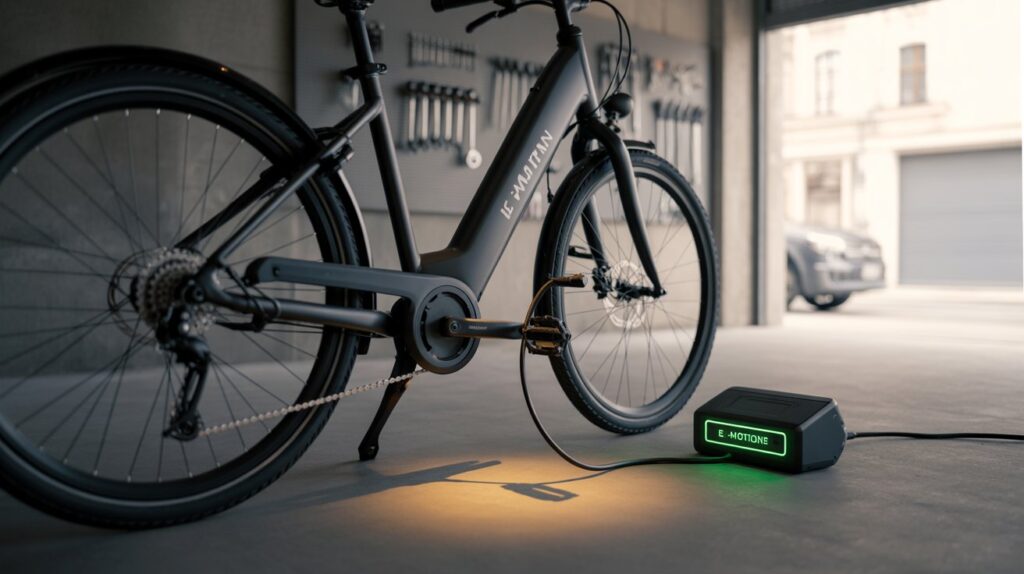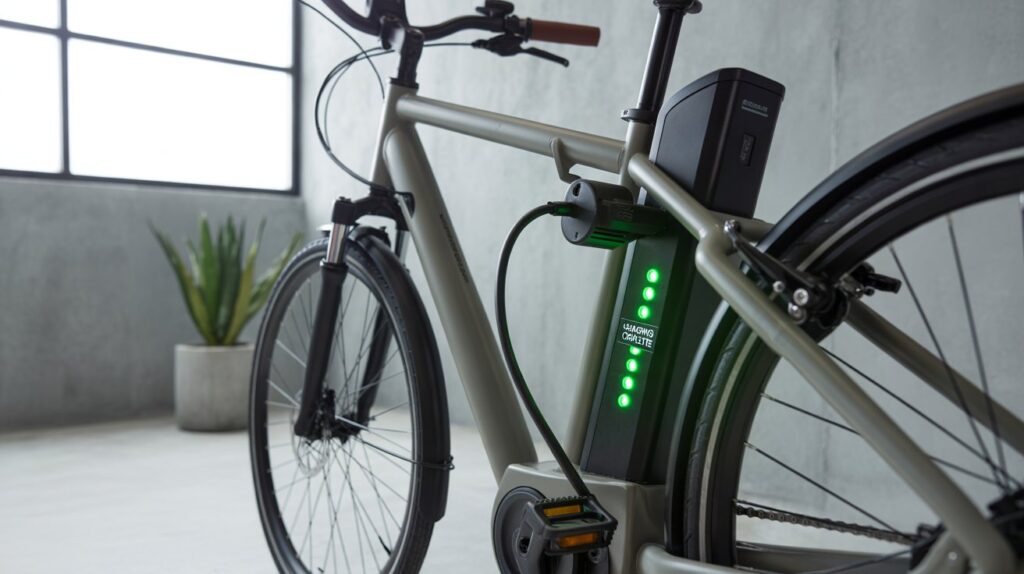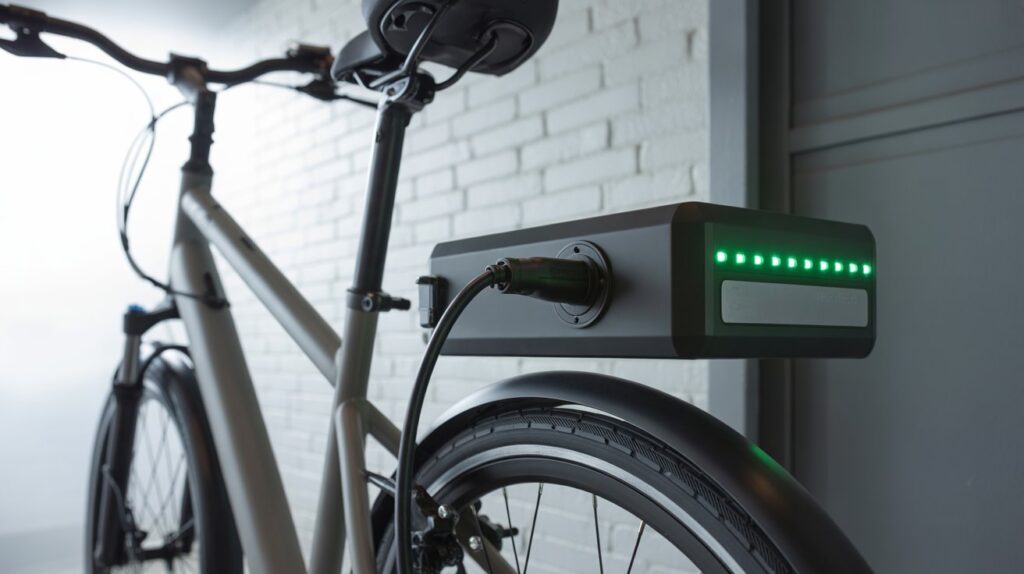
E-bike chargers are the unsung heroes of electric bike ownership. Without them, even the most powerful battery becomes useless. But not all e-bike chargers are created equal, and using the wrong one—or a damaged one—can spell disaster for your e-bike’s performance.
In this article, we’ll explore the most common problems with e-bike chargers, how to recognize them early, and how to keep your e-bike running safely and efficiently.
How E-Bike Chargers Actually Work

Every e-bike charger is designed to convert standard AC power (from your wall outlet) into DC power suitable for your bike’s battery. But each e-bike model may use a different battery voltage and connector type. That’s why not all e-bike chargers are interchangeable.
Some chargers are designed for 36V batteries, others for 48V, 52V, or even higher. If you connect a 52V charger to a 36V battery, you risk overcharging, overheating, or even permanent damage.
Most Common E-Bike Charger Problems
1. Charger Not Powering On
Sometimes the issue isn’t with the battery at all—it’s the charger. If your e-bike charger doesn’t light up or show any sign of activity, try plugging it into a different outlet. Still nothing? The internal fuse or circuit board might be fried.
2. LED Indicator Stays Green
Most e-bike chargers have LED indicators: red means charging, green means full. But if your charger always stays green, even when the battery is dead, it likely means:
- The battery isn’t connecting properly.
- The charger isn’t detecting the battery.
- The charger is faulty and not delivering current.
3. Overheating During Charging
A warm charger is normal. But if it becomes too hot to touch or smells like burning plastic, unplug it immediately. This can be a sign of:
- Internal component failure.
- Dirty or corroded charging ports.
- Incompatible charger for your battery specs.
4. Sparking or Arcing
A tiny spark is sometimes normal when connecting. But loud pops or visible arcing when plugging in the charger are major red flags. This usually points to:
- Dust or moisture in the connector.
- Short-circuiting components.
- Worn or damaged charger pins.
5. Partial Charging
Does your e-bike charger charge the battery only halfway? This could be a battery problem, but more often, it’s:
- An overheating charger that stops mid-way.
- A faulty charging circuit in the charger.
- Power fluctuation in your home’s outlet.
Charger Compatibility: Not as Simple as It Seems

Here’s where most new e-bike owners get it wrong. Just because two e-bike chargers look the same doesn’t mean they work the same. Even if the plugs match, the voltage, amperage, and smart charging circuitry may differ.
Always check:
- Output Voltage (V): Must match your battery.
- Current Output (A): Higher amps = faster charge, but too much can damage cells.
- Connector Type: Barrel, XLR, DC plug—match this exactly.
- Brand-Specific Logic Chips: Some e-bike chargers are designed to only work with certain brands or BMS systems.
Pro Tips to Keep Your E-Bike Charger Healthy
- Use a surge protector between the wall and charger.
- Keep it clean: Dust in vents can cause overheating.
- Never leave it plugged in overnight, especially if your battery is already full.
- Store in a dry, cool place. Humidity kills electronics.
E-Bike Charger Issues: Summary Table
Here’s a clear summary of all the key points discussed in the article:
| Section | Key Takeaways |
|---|---|
| Loose Connections | One of the most common issues; check plug, battery port, and wiring regularly to prevent charging interruptions. |
| Charger Overheating | Caused by poor ventilation or cheap build; always place your charger in a well-ventilated area and avoid covering it during charging. |
| Incompatible E-Bike Chargers | Not all e-bike chargers are interchangeable—mismatched voltage or amps can damage the battery or reduce efficiency. |
| Faulty Indicator Lights | If LED lights don’t reflect correct status, it may signal an internal failure or faulty circuitry in the charger. |
| Slow Charging | This could point to a degraded charger, aging battery, or even power source fluctuations. |
| Unusual Noises or Smell | Any buzzing, humming, or burnt smell means immediate attention is needed—stop use and inspect both charger and battery. |
| Environmental Damage | Water exposure, excessive heat, or dust can damage e-bike chargers—always store and use them in protected environments. |
| DIY Fix vs. Replacement | Minor issues like loose wiring can be fixed, but recurring issues usually mean it’s safer to replace the charger with one matching specifications. |
| Safety First | Avoid modifying e-bike chargers or using random replacements; improper use may lead to fires or long-term damage. |
| Routine Inspection Tips | Check connectors, cable integrity, and charging times weekly to stay ahead of potential failures. |
Frequently Asked Questions About E-Bike Chargers
1. What is an e-bike charger and how does it work?
An e-bike charger is a power adapter that converts AC electricity from your wall outlet into the DC electricity needed to charge an electric bike’s battery. It typically includes a transformer, rectifier, and voltage regulator. Most chargers are designed specifically for lithium-ion batteries, which are the most common in modern e-bikes.
For in-depth maintenance tips and e-bike charging safety, visit: ridethebikes.xyz
2. Are all e-bike chargers the same?
No, not all e-bike chargers are the same. They vary by:
- Voltage output (usually 36V, 48V, or 52V)
- Amperage (which affects charging speed)
- Connector type (DC plug size or proprietary)
Using the wrong charger can damage your battery or pose a safety hazard.
3. Can I use a universal charger for my e-bike?
It’s not recommended. While some chargers claim to be universal, using one without matching voltage and current output to your battery can cause overheating, reduced lifespan, or even permanent damage. Always refer to your e-bike’s manual or check a reliable guide like ridethebikes.xyz for compatibility advice.
4. How long does it take to charge an e-bike battery?
Charging time depends on:
- Battery capacity (in watt-hours or amp-hours)
- Charger’s amp output
Example:
- A 500Wh battery using a 2A charger = approx. 5–6 hours
- A 500Wh battery using a 4A charger = approx. 2.5–3 hours
Overnight charging is common, but be sure your e-bike charger has safety shutoff features.
5. Why is my e-bike charger getting hot during charging?
Mild warmth is normal, but excessive heat may suggest:
- Poor ventilation
- A failing internal component
- Incorrect power rating
Avoid covering the charger or placing it near heat sources. Read detailed overheating causes here: ridethebikes.xyz
6. What are signs of a failing e-bike charger?
Look out for:
- LED indicator not working
- Charger stops before full charge
- Strange buzzing or smell
- Unusual delay in charging
If you experience any of these symptoms, it’s safest to stop using the charger immediately and test it with another compatible battery, or consult a professional.
7. Can I leave my e-bike battery charging overnight?
Yes, but only with a high-quality e-bike charger that includes auto shutoff or BMS (Battery Management System) protection. Avoid charging near flammable materials. For added peace of mind, use a timer or smart plug.
8. Does using a fast charger damage the battery?
Fast chargers (higher amperage) can reduce battery life over time due to increased heat during the charging cycle. Use them occasionally when you need a quick charge, but for daily charging, a standard 2A charger is best.
See complete safe charging practices here: ridethebikes.xyz









